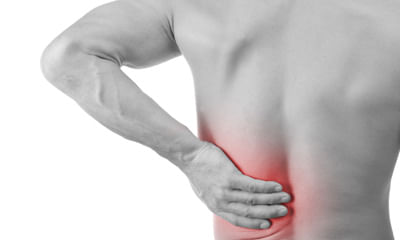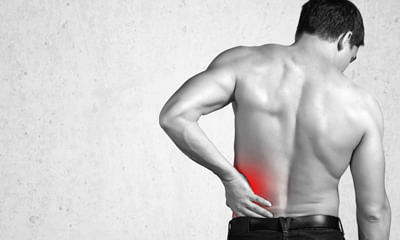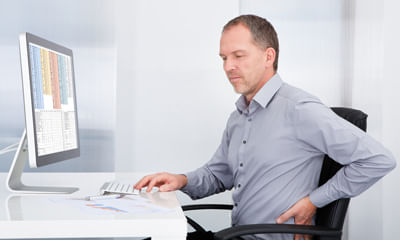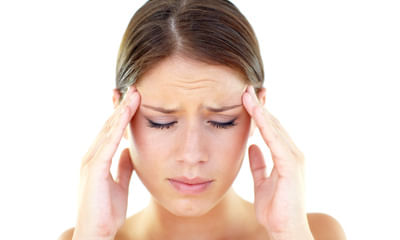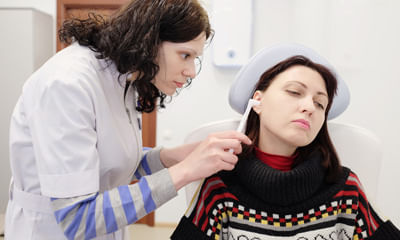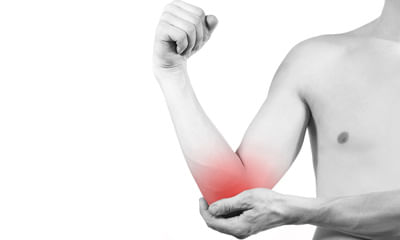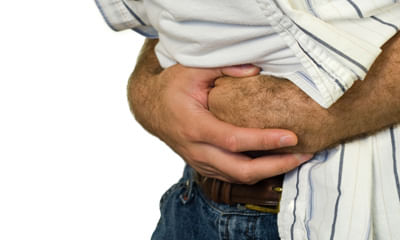Head Pain Due To Acidity
Doctor, I had an accident in 2014, after taking x-ray, I got l1 compression. After taking 2 months bed rest, it got redu ...
Ask Free Question
Physical examination a thorough physical examination reveals much about the patient's health and general fitness. The physical part of the exam includes a review of the patient's medical and family history. Often laboratory tests such as complete blood count and urinalysis are ordered. The physical exam may include: •palpation (exam by touch) determines spinal abnormalities, areas of tenderness, and muscle spasm. •range of motion measures the degree to which a patient can perform movement of flexion, extension, lateral bending, and spinal rotation. •a neurologic evaluation assesses the patient's symptoms including pain, numbness, paresthesias (e.g. Tingling), extremity sensation and motor function, muscle spasm, weakness, and bowel/bladder changes. Particular attention may be given to the extremities. Either a ct scan or mri study may be required if there is evidence of neurologic dysfunction. Physical therapy which teaches the patient to strengthen the paravertebral and abdominal muscles which lend support to the spine. General exercises which help build flexibility, increase range of motion and strength. A corset or a brace could be used to provide support; cervical collars may be used to alleviate pain by restricting movement. Hot or cold packs on the affected area, ultrasound and electric stimulation are some of the other treatments which are used. Management of acute symptoms rest and support- with acute joint symptoms, a lumbar corset may be helpful to provide rest to inflamed facet joints. When acute symptoms decrease, discontinue corset by gradually increasing the time without the corset. Often the most comfortable position is flexion, esp. If there are neurologic signs due to decrease in the foraminal space from joint swelling or osteophytes. Education of posture- head, neck and shoulders should be supported by the back rest of chair with a small pillow in the lumbar spine, the feet supported and the arm resting on arm rests or on a pillow in the lap. Modalities- hot or cold packs on the affected area, ultrasound and electric stimulation are some of the other treatments which are used to decrease pain and reduce muscle spasm. Relaxation- by soft tissue techniques. Teach self relaxationtechniques, e.g like deep breathing exercises and physiological relaxation (laura mitchell method) and hydrotherapy. Traction- gentle intermittent joint distraction and gliding techniques may inhibit painful muscle responses and provide synovial fluid movement within the joint for healing. Gentle rom within the limits of pain. Management of subacute and chronic phase increase rom- free active exercises of lumbar spine. Pelvic tilting forward, backward in crook lying, quadriped, sitting and standing. Mobilization- restoration of intersegmental mobility by accessory pressure enables the patient to regain full functional painfree movement. Stretching exercises. Strengthening exercises.Posture correction.
Hello doctor! hope everyone is fine. Doctor i'm facing an issue of pain in my backbone, wrist and right leg. I didn't un ...
Ask Free Question
The pain may be due to sciatic nerve compression this simple stretch helps relieve sciatica pain by loosening your gluteal and piriformis muscles, which can become inflamed and press against the sciatic nerve. 1.lie on your back with your legs extended and your feet flexed upward. 2.bend your right leg and clasp your hands around the knee. 3.gently pull your right leg ac 4.5.6.7.ross your body toward your left shoulder. Hold it there for 30 seconds. Remember to pull your knee only as far as it will comfortably go. You should feel a relieving stretch in your muscle, not pain. 8.push your knee so your leg returns to its starting position. 9.repeat for a total of 3 reps, and then switch legs. 5.sitting spinal stretch sciatica pain is triggered when vertebrae in the spine compress. This stretch helps create space in the spine to relieve pressure on the sciatic nerve. 1.sit on the ground with your legs extended straight out with your feet flexed upward. 2.bend your right knee and place your foot flat on the floor on the outside of your opposite knee. 3.place your left elbow on the outside of your right knee to help you gently turn your body toward the right. 4.hold for 30 seconds and repeat three times, then switch sides. 6. Standing hamstring stretch this stretch can help ease pain and tightness in the hamstring caused by sciatica. 1.place your right foot on an elevated surface at or below your hip level. This could be a chair, ottoman, or step on a staircase. Flex your foot so your toes and leg are straight. If your knee tends to hyperextend, keep a slight bend in it. 2.bend your body forward slightly toward your foot. The further you go, the deeper the stretch. Do not push so far that you feel pain. 3.release the hip of your raised leg downward as opposed to lifting it up. If you need help easing your hip down, loop a yoga strap or long exercise band over your right thigh and under your left foot. 4.hold for at least 30 seconds, and then repeat on the other sideif you have low back pain and sciatica you can undergo intermittent pelvic traction where in your half of your body weight will be added in the electronic traction so that that would help you to reduce the pain, along with interferential therapy stimulations which would help you to get relieved from the radiating pain. Apply ice for the pain to get subsided immediately. If you cannot go immediately for the physiotherapy treatment. Ice can be kept in the low back where you have back pain. It is suggestible to wear lumbo sacral belt which would help you to build the abdominal muscle tone which itself would make you feel better. You can also wear mcr chappals which would help you to have less weight falling in the painful back. U have to take vitamin d rich foods. Likemilk, cheese, yogurt, brocoli, spinach. U need calcium consumption for increase the bone density. Lackof bone and bones crush inside the body vitamin d intake via supplements or exposure to low levels of sunlight. Vitamin d is used to absorb calcium in the bone and regulate calcium in the blood.this might be due to low calcium or vitamin d which has more impact on the bone density and also it makes one to feel that there is lack of bone strength or in a way the bones are brittle and almost breaking and they feel it is crushed in a way there are many bones breaking at the same time. You have to take vitamin d rich foods. Likemilk, cheese, yogurt, brocoli, spinach. U need calcium consumption for increase the bone density.
Mere papa ko back pain ho rha hai acidity ya kuch aur nhi pata ek baar doctor se consult karke laye the acid problem keh ...
Ask Free Question
Back pain exercises; kindly do these exercises. Back pain is described as acute or chronic based on how long you’ve had it. Acute pain lasts days to weeks, subacute pain lasts six weeks to three months, and chronic pain lasts longer than three months. Things that make it better or worse back pain may get worse with movement or if you sit or stand for a long time. It may get better if you switch positions or walk around. Other symptoms you may experience with back pain include: •the painful spot looking swollen and feeling tender to the touch •a muscle spasm in the painful area •numbness or weakness in one or both of your legs (if the pain is due to a nerve issue) if you find you have back pain and can’t hold your urine or bowel movements, something is pressing on your spinal nerves, and you should be evaluated immediately. This condition, called cauda equina syndrome, can cause severe long-term damage to your spinal nerves if not treated right away. 6 imbalances that cause pain—and how to fix them "pain is a medical condition and a medical issue, says brett jones, owner of applied strength in pittsburgh who is certified for the functional movement screen, a system of tests and cor rective exercise strategies. "it's a warning sign. The pain is there to tell you something's wrong. And that warning sign could be more serious than "you're going too hard. Jones and the other coaches consulted for this piece all had a horror story to tell-when pain in a client meant a more serious condition such as a nerve issue, thyroid issue, or even cancer. The point: if you experience regular pain while exercising-or when you're not-go to the doctor. If you've been cleared by a doc and you're still feeling discomfort, try these simple tests to see what's truly causing the pain-it could be related to an imbalance in a completely different part of your body. The good news: with these drills, stretches, and corrective exercises, you may be able to fix them-no doctors necessary. 1. Standing extension how it helps – this standing extension helps reverse what you do on a daily basis (hunching)… since most bulging discs and herniated discs are caused by poor posture and repeated flexion of the spine (esp bending fwd in bad posture), this stretch helps push the disc back to neutral position. How to do it – begin this exercise by standing up with good posture. Now take both hands and place them on both sides of your lower back. Now with the help of your hands push your pelvis forward and extend your spine back. Follow the extension with your neck so that you end up facing the ceiling. – start with 10 repetitions and do 2-3 sets. – this one is particularly great to do when you need a break from sitting at your desk. ** this should not cause any pain. If you feel pain during it is not a good one for you. In that case, stop and try some of the other exercises below instead. 2. Half cobra pose (prone lumbar extension) how it helps – the half cobra stretch helps to push the disc material back towards the center of the inter-vertebral disc to allow for improved healing. The goal of repeated lower back extension is the “centralization of symptoms”, which basically means pain that travels down the affected leg to the foot should come back up closer to the low back – which will in turn alleviate the pain. How to do it – begin this exercise by lying on your stomach (prone position) and slowly prop yourself up on your elbows while keeping your hips in contact with the floor. – hold the prop-up position for 10-15 seconds before returning to the prone position (lying face down). – gradually increase to holding the end position for 30 seconds. Aim for 10 repetitions of this stretch. ** initially, you may not be able to tolerate this position very well, so make sure you start slowly and carefully. If there’s any pain, try a different exercise instead. 3. Full cobra pose (advanced extension) how it helps – this stretch is based on the same principle as the half cobra pose above. This advanced extension helps to push disc material back towards the center of the intervertebral disc, with the goal of alleviating pain symptoms. How to do it – once you’ve mastered the half cobra pose, you can increase the difficulty by moving to the advanced version of this stretch. Begin this exercise by lying on your stomach in the prone position (lying facing down) and slowly press up on your hands while keeping your pelvis in contact with the floor and lower back relaxed. – hold the prop-up position for 10 seconds. Aim for 10 repetitions of this stretch. – eventually try to hold this pose for longer if it feels good (20-30 seconds). ** if you feel pain during this exercise, it is not a good one for you. In that case, stop and try some of the other exercises instead. 4. Cat-cow how it helps – this is one of the most popular herniated disc exercises. By combining two yoga poses, the cat-cow stretch can help to relieve pressure on the herniated disc by opening the intervertebral disc space. It also improves mobility of the spine, which may help to relieve disc herniation pain and speed recovery. How to do it – begin this stretch on your hands and knees. Inhale and let your stomach “drop” towards the floor as you look up towards the ceiling. – follow this by exhaling and slowly rounding your spine while pressing into the floor with your hands and slightly curving your neck to look at your feet. – aim for 10 repetitions of this stretch and do 2-3 sets. How it helps – this exercise will help strengthen and stabilize your lower back and deep spine muscles. This will help you to maintain a good posture and avoid future episodes of herniated discs. How to do it: – begin on your hands and knees with your hands positioned under your shoulders and knees positioned under your hips. – raise your left arm and reach it forwards until it is aligned with your torso; at the same time, kick your right leg backwards until is it aligned with your torso. – hold this position for 2-3 seconds before slowly returning to the starting position. – repeat with your right arm and left leg. – alternate sides for 10 repetitions and do 2-3 sets. ** ensure that your head, neck, and back maintain a neutral alignment to minimize stress on your neck. 5.plank: how it helps – just like the bird dog, this “core” exercise will help bring your pelvis into right position by strengthening the deep spinal muscles and glutes (butt muscles). How to do it – begin lying on your stomach with your forearms against the mat. – engage your core and lift your body so that you are resting on your forearms and toes. – start with 10 second holds and work up to 30 second holds, do 2-3 sets. ** ensure to keep your back straight throughout the entire exercise – spine in neutral position. Thoracic expansion if you’re using a chair, sit facing forward and allow your upper body to fall over the back of the chair. Extend your arms above your head for a deeper stretch. Hold either position for 10 seconds. 1. Plank the world record for the longest plank is 8 hours. Luckily, you don’t need to hold it that long for the exercise to have an effect! in fact. You can hold it for 10-15 seconds. • the plank is similar to a push-up position, but instead of resting on your hands, you rest on your elbows and bring them directly underneath your chest. • after kneeling, lean forward and place your elbows on the ground directly below your shoulders. • lift your knees off of the floor and push your feet back. Ensure your back is straight and keep your neck aligned with the rest of your spine. • hold the position and tighten your core muscles for the desired time. 2. Side plank just like the original plank, but only balancing on one side. • lie on the floor on your side, facing sideways with your feet together. • lift up your body until you are supporting yourself with your elbow, directly below your shoulder. • raise your hips until your body is in a straight line and tighten your core muscles; your body should create a slant from your shoulders to your feet. • hold this position without dropping your hips. • repeat on the opposite side. 3. Pelvic tilt with exercise ball sit on a ball that allows your legs to be at a 90-degree angle with your feet flat on the floor. • keep your shoulders back and spine straight. • tilt your hips forward and flex your abdominals tight. • tilt your hips backward as you stick your tailbone out. • move back and forth slowly, keeping your shoulders back. • repeat 10 times for 3 sets. 4. Superman lie on your stomach, face down, with your arms out in front of you. • lift arms, legs, and chest off the floor simultaneously while keeping your hips grounded. • hold for a minimum of two seconds. • lower back down slowly. • repeat 10 times for 3 sets. 6. Crunches lie flat on your back, placing your feet flat on the floor with your legs bent. • fold your arms across your chest and lift your torso up until your head, neck, and torso are off the ground. • hold for a moment before lowering back down. • repeat. 6. Quadruped arm opposite leg raises • kneel on the floor, lean forward, and place your hands palm-down on the floor. • make sure your back is straight, your knees are below your hips, and that your palms are directly below your shoulders. • raise one arm as you raise the opposite leg until both are aligned straight out from your body, parallel to your spine.
Hi. I met with a neck injury due to a dangerous road accident 6 years back led to a huge swelling all over my neck and a ...
Ask Free Question
Neck pain cervical spondylosis– chronic condition with radiating pain this is cervical pain (neck pain) and that's the reason the pain radiates until the shoulder blades. If you keep ice that would help and alongside you can do hot water fermentation. You shall use cervical collar which would help you to reduce the radiating pain i.e. Due to the nerve compression. You have to go for traction and also you can do ift. Please consult the nearby therapist for quick relief. Use collar will definitely be helpful for him to maintain the good posture. And also cervical pillow can be used which might make you to have better posture of the shoulder neck and arm. 1.neck tilt: from the sitting position, tilt your head down so your chin touches your chest. Hold this position for 5 second s. Return to the starting position and repeat. Do this five times. 2.side-to-side neck tilt. From the same starting position, tilt you neck toward one shoulder, leading with your ear. Hold for 5 seconds and then return to the starting position. Do this five times on each side. 3.neck turn. Look straight ahead, then turn your head to one side, keeping your chin at the same level. Do this five times on each side. 4.neck stretch. Holding the rest of your body straight, push your chin forward, stretching your throat. Hold for 5 seconds. From the same starting position, push your chin backward and hold for 5 seconds. Do the forward and backward stretch five times each. If any of these exercises cause severe pain or weakness in your hands or arms, stop right away and talk with your doctor. We suggest you to wear cervical collar which will help you to improve the cervical angle and also it definitely helps you to improve the neck posture due to which your neck pain is triggered more. The importance of wearing cervical collar is to give good stability to the neck and also it definitely prevents you to have excess neck movements which makes the condition worse. If you wear cervical collar you cannot turn your neck as you like which itself will help you to have better functioning of the cervical spine. This cervical soft collar what we are suggesting for you is available at our clinic. If you want you can buy from us, if you are far away from chennai we can send you by courier. The reason why we are conveying you to buy from us is we can demonstrate over the videocall (using whatsapp) and also we can monitor you throughout when to wear it and how long to wear it. And also if you find any difficulty wearing the brace you can also revert back to us for few more suggestions and we can propose you good solution.
Hello sir, I am preparing competitive exam but I have health issues due to 2015 accident. Problems headache, neck pain, ...
Ask Free Question
Kindly do exercises that are listed below 2. Standing extension how it helps – this standing extension helps reverse what you do on a daily basis (hunching)… since most bulging discs and herniated discs are caused by poor posture and repeated flexion of the spine (esp bending fwd in bad posture), this stretch helps push the disc back to neutral position. How to do it – begin this exercise by standing up with good posture. Now take both hands and place them on both sides of your lower back. Now with the help of your hands push your pelvis forward and extend your spine back. Follow the extension with your neck so that you end up facing the ceiling. – start with 10 repetitions and do 2-3 sets. – this one is particularly great to do when you need a break from sitting at your desk. ** this should not cause any pain. If you feel pain during it is not a good one for you. In that case, stop and try some of the other exercises below instead. 3. Half cobra pose (prone lumbar extension) how it helps – the half cobra stretch helps to push the disc material back towards the center of the inter-vertebral disc to allow for improved healing. The goal of repeated lower back extension is the “centralization of symptoms”, which basically means pain that travels down the affected leg to the foot should come back up closer to the low back – which will in turn alleviate the pain. How to do it – begin this exercise by lying on your stomach (prone position) and slowly prop yourself up on your elbows while keeping your hips in contact with the floor. – hold the prop-up position for 10-15 seconds before returning to the prone position (lying face down). – gradually increase to holding the end position for 30 seconds. Aim for 10 repetitions of this stretch. ** initially, you may not be able to tolerate this position very well, so make sure you start slowly and carefully. If there’s any pain, try a different exercise instead. 4. Full cobra pose (advanced extension) how it helps – this stretch is based on the same principle as the half cobra pose above. This advanced extension helps to push disc material back towards the center of the intervertebral disc, with the goal of alleviating pain symptoms. How to do it – once you’ve mastered the half cobra pose, you can increase the difficulty by moving to the advanced version of this stretch. Begin this exercise by lying on your stomach in the prone position (lying facing down) and slowly press up on your hands while keeping your pelvis in contact with the floor and lower back relaxed. – hold the prop-up position for 10 seconds. Aim for 10 repetitions of this stretch. – eventually try to hold this pose for longer if it feels good (20-30 seconds). ** if you feel pain during this exercise, it is not a good one for you. In that case, stop and try some of the other exercises instead. 5. Cat-cow how it helps – this is one of the most popular herniated disc exercises. By combining two yoga poses, the cat-cow stretch can help to relieve pressure on the herniated disc by opening the intervertebral disc space. It also improves mobility of the spine, which may help to relieve disc herniation pain and speed recovery. How to do it – begin this stretch on your hands and knees. Inhale and let your stomach “drop” towards the floor as you look up towards the ceiling. – follow this by exhaling and slowly rounding your spine while pressing into the floor with your hands and slightly curving your neck to look at your feet. – aim for 10 repetitions of this stretch and do 2-3 sets. How it helps – this exercise will help strengthen and stabilize your lower back and deep spine muscles. This will help you to maintain a good posture and avoid future episodes of herniated discs. How to do it: – begin on your hands and knees with your hands positioned under your shoulders and knees positioned under your hips. – raise your left arm and reach it forwards until it is aligned with your torso; at the same time, kick your right leg backwards until is it aligned with your torso. – hold this position for 2-3 seconds before slowly returning to the starting position. – repeat with your right arm and left leg. – alternate sides for 10 repetitions and do 2-3 sets. ** ensure that your head, neck, and back maintain a neutral alignment to minimize stress on your neck. Plank: how it helps – just like the bird dog, this “core” exercise will help bring your pelvis into right position by strengthening the deep spinal muscles and glutes (butt muscles). How to do it – begin lying on your stomach with your forearms against the mat. – engage your core and lift your body so that you are resting on your forearms and toes. – start with 10 second holds and work up to 30 second holds, do 2-3 sets. ** ensure to keep your back straight throughout the entire exercise – spine in neutral position. Thoracic expansion if you’re using a chair, sit facing forward and allow your upper body to fall over the back of the chair. Extend your arms above your head for a deeper stretch. Hold either position for 10 seconds and release. Repeat 3 times. Can tight neck muscles cause vertigo. Your inner ear might not be the culprit. Vertigo is the technical name for dizziness, especially the type where it feels like the room, or the patient, is spinning. Theneck structures most likely to cause vertigo are a muscle called the sternocleidomastoid (scm for short) and the uppermost joints of the spine shin pain 1.Keep your legs elevated. 2.Use ice packs to reduce swelling. Shop for cold compresses. 3.Take an over-the-counter anti-inflammatory, such as ibuprofen (advil) or naproxen sodium (aleve). Shop for ibuprofen and naproxen sodium. 4.Wear elastic compression bandages. 5.Use a foam roller to massage your shins. Finger stretch 1.Place your hand palm-down on a table or other flat surface. 2.Gently straighten your fingers as flat as you can against the surface without forcing your joints. 3.Hold for 30 to 60 seconds and then release. 4.Repeat at least four times with each hand. Scapular dyskinesis technique #1: overhead wall rollout this is a great exercise for retraining scapulohumeral rhythm and activating the serratus anterior as well as integrating shoulder flexion with core stability. 1.Stand leaning against a wall with an ab-wheel in your hands 2.Protract your scapulae 3.Slowly roll the ab-wheel up the wall and ensure you’re shrugging your shoulders to elevate your scapulae as your arms rise up while keeping tension in your core to avoid lumbar extension 4.Roll back down slowly and with control and return to the initial position. 5.Breathe naturally throughout the movement scapular dyskinesis technique #2: supine serratus activator this activation technique will help reset your scapulae in the correct position, while reactivating the inhibited posterior muscles of your shoulder. 1.Lay on your back with legs bent, feet flat and arms by your side 2.Bend your elbows so your fingers are pointing up towards the sky with palms facing together 3.Drive your elbows into the ground to activate the lats and posterior deltoids without trying to pinch your scapulae together 4.Picture your chest opening and the medial border of the scapulae moving up into your body and hold for 5 seconds 5.Relax briefly and repeat.
Sir, good day. Hope you are doing well. Tejas joshi here, would like to brief you. I felt a choke by december beginning ...
Ask Free Question
The endoscopy report says that your esophagus is inflamed due to reflux of acid from stomach. Avoid going to bed immediately after meals. Raise your head end of your bed. Avoid fatty and acidic foods. Avoid alcohol, if you consume. Reduce weight, if overweight. You also need to start anti acidity medication if not already taking.
I met with an accident on 11 november 2021 and got stitches on my head, injury on external ear, and hand. I've been suff ...
Ask Free Question
Do’s and don’ts for neck pain: do’s •do turn to one side while getting up from supine position. •use hot pack for your neck. •use towel roll under the neck during supine lying. •use pillow of normal thickness in side lying position. •do isometrics for neck. •arms should be supported in one of the three positions:•™ hands in pocket ™ •hands on thighs/or on table. •™ hand behind back with elbow straight. •in order to avoid holding the head in the same position for long periods, take break while driving, watching tv or working on a computer. •use a seat belt when in a car. •use cervical collar in case of giddiness. •retraction of shoulders every hour: move shoulders backward. Don’t’s •don’t sleep straight. •don t’ bend your neck. •avoid hanging of arms. •avoid sitting sitting for prolonged prolonged period of time in stressful stressful postures postures. •do not lift heavy weights on head or back. •do not drive for long hours; take breaks. •avoid habit of holding the telephone on one shoulder and leaning at it for long time. •do not take many pillows below the neck and shoulder while sleeping, •in order to turn around, do not twist your neck or the body; instead turn around by moving your feet first. Cervical spondylosis– chronic condition with radiating pain this is cervical pain (neck pain) and that's the reason the pain radiates until the shoulder blades. If you keep ice that would help and along side you can do hot water fermentation. You shall use cervical collar which would help you to reduce the radiating pain ie. Due to the nerve compression. You have to go for traction and also you can do ift. Please consult the near bytherapist for quick relief. Since you have pain for more than 10 years it is suggestible to go for cervical muscle strengthening exercise. Use collar will definitely be helpful for him to maintain the good posture. And also cervical pillow can be used which might make you to have better posture of the shoulder neck and arm. Neck tilt: from the sitting position, tilt your head down so your chin touches your chest. Hold this position for 5 second s. Return to the starting position and repeat. Do this five times. Side-to-side neck tilt. From the same starting position, tilt you neck toward one shoulder, leading with your ear. Hold for 5 seconds and then return to the starting position. Do this five times on each side. Neck turn. Look straight ahead, then turn your head to one side, keeping your chin at the same level. Do this five times on each side. Neck stretch. Holding the rest of your body straight, push your chin forward, stretching your throat. Hold for 5 seconds. From the same starting position, push your chin backward and hold for 5 seconds. Do the forward and backward stretch five times each. If any of these exercises cause severe pain or weakness in your hands or arms, stop right away and talk with your doctor.We suggest you to wear cervical collar which will help you to improve the cervical angle and also it definitely helps you to improve the neck posture due to which your neck pain is triggered more. The importance of wearing cervical collar is to give good stability to the neck and also it definitely prevents you to have excess neck movements which makes the condition worse. If you wear cervical collar you cannot turn your neck as you like which itself will help you to have better functioning of the cervical spine. This cervical soft collar what we are suggesting for you is available at our clinic. If you want you can buy from us, if you are far away from chennai we can send you by courier. The reason why we are conveying you to buy from us is we can demonstrate over the videocall (using whatsapp) and also we can monitor you throughout when to wear it and how long to wear it. And also if you find any difficulty wearing the brace you can also revert back to us for few more suggestions and we can propose you good solution how to go about it.
I take psych meds cariprazine and valproate and high strength fish oil. Since starting inderal la 20 mg for anxiety I fe ...
Ask Free Question
1.Use Deep Breathing Deep breathing is another effective way to relieve stress and anxiety. It helps you with physical symptoms such as shallow breathing and rapid heart rate, and it also helps with controlling your thoughts. When you practice deep breathing, you're forced to take your thoughts off of whatever is causing you anxiety and to focus on the breathing technique that you are using. 2.Keep A Journal Journaling can be an effective way to deal with your anxiety and to find relief. It helps you to take all of the things that are rolling around in your head and get them out of your head and down on paper. Sometimes seeing the things that we're worried about on paper can help us to see that they're not as big of a deal as we thought they were. It can also help us to find solutions that we have been overlooking. 3.Hang Out With Friends If you're struggling with anxiety, sometimes the last thing that you want to do is go hang out with your friends. Even if it's an activity that you enjoy with people that you like, the thought of it can be stressful. Your brain already feels overwhelmed with things that you feel you need to figure out, and it can seem like a bad use of time to do something fun. 4. Exercise, Find What Works For You : You might be tired of hearing about how great exercise is for your health. But, the reason you hear about it so much is that there's no way around it. Exercise it's good for both your physical body and for your mind.Getting regular exercise has been proven to help you sleep better at night, clear your head, and boost your mood. It's a great way to use up all that pent-up energy that you have in a way that's going to benefit you in multiple areas of your life.
I am 25 years old male. I have pain below ribcage and I have persistent pain from 1 years .its due to the acid reflux .w ...
Ask Free Question
Cold compresses can help reduce swelling in the area. Cooling also helps to numb sharp pain. Apply an ice pack for up to 20 minutes, up to five times a day. Use a frozen gel pack, ice cubes in a plastic bag, or a bag of frozen peas. Wrap the cold pack in a soft towel. Do not apply a cold pack directly to skin. Heat therapy heat helps to relax tense muscles and soothe a stiff area. It can help with muscle pain and bonny pain. Use a heated gel pack, heating pad or a hot water bottle.
Sir my father have pain in stomach and it is since from 15-20 years and my father have done various checkups from jaipur ...
Ask Free Question
This medicine (proton pump inhibitor (ppi).) will not cure problem. It only works by reducing the amount of acid in the stomach. The day you do not take medicine normal acid production will be there n you will have symptoms. Do this 1. Don't take tea empty stomach. Eat something like a banana (if you are not diabetic) or any seasonal fruit or soaked almonds and a glass of water first thing in the morning (within 10 mins of waking up). No only biscuits or rusk will not do. 2. Don't overeat 3. Take your breakfast every day. Don't skip it. U can eat whatever your mother or grandparent eat in bfast. I mean to say whatever is your traditional food. If punjabi eat paratha, if belongs to south then take idli/ dosa etc. 4. Have light meals every 2 hours (in addition to your breakfast, lunch n dinner) e.g. Nariyal paani, chaach, a handful of dry fruits, a handful of peanuts, any fresh n seasonal fruit (eat whole fruit not juice), a cup of curd/milk etc 5. Finish your dinner at least 2 hours before going to sleep. Take simple food like rice n dal in dinner. 6. Maintain active life style7. Avoid fast foods, spicy n fried foods, carbonated beverages 8. Take a lot of green vegetables n fruit. It contains a lot of fiber which will help reduce tendency for constipation 9. Drink lot of water.10. Everyday preferably sleep on same time 11. Take half cup of cold milk when you feel acidity, it will help. Curd is good for u. 12. If its very severe then elevate your bed raising the head of your bed six to eight inches can help gravity keep gastric acid down in your stomach. This is for long term results but for now to bring your digestive system back on track you need to take medicines. For that I need more details, you can consult me.

